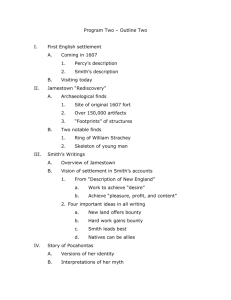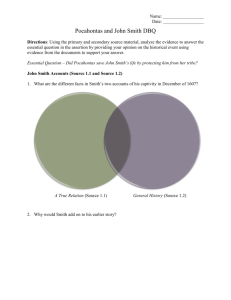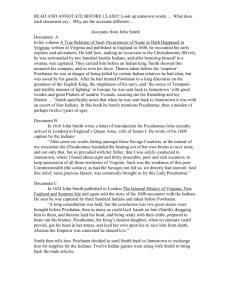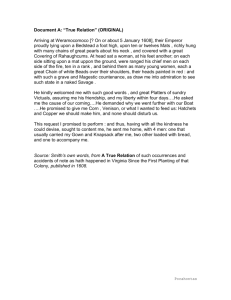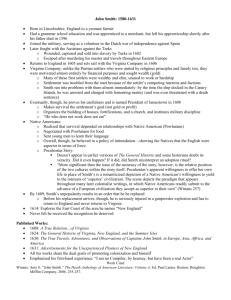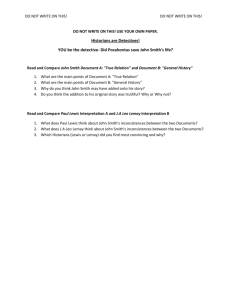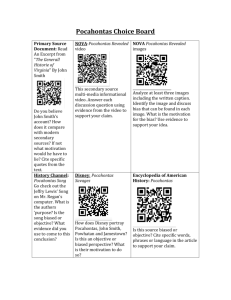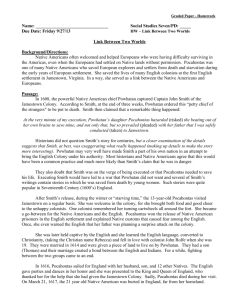Pocahontas Document A (modified)
advertisement
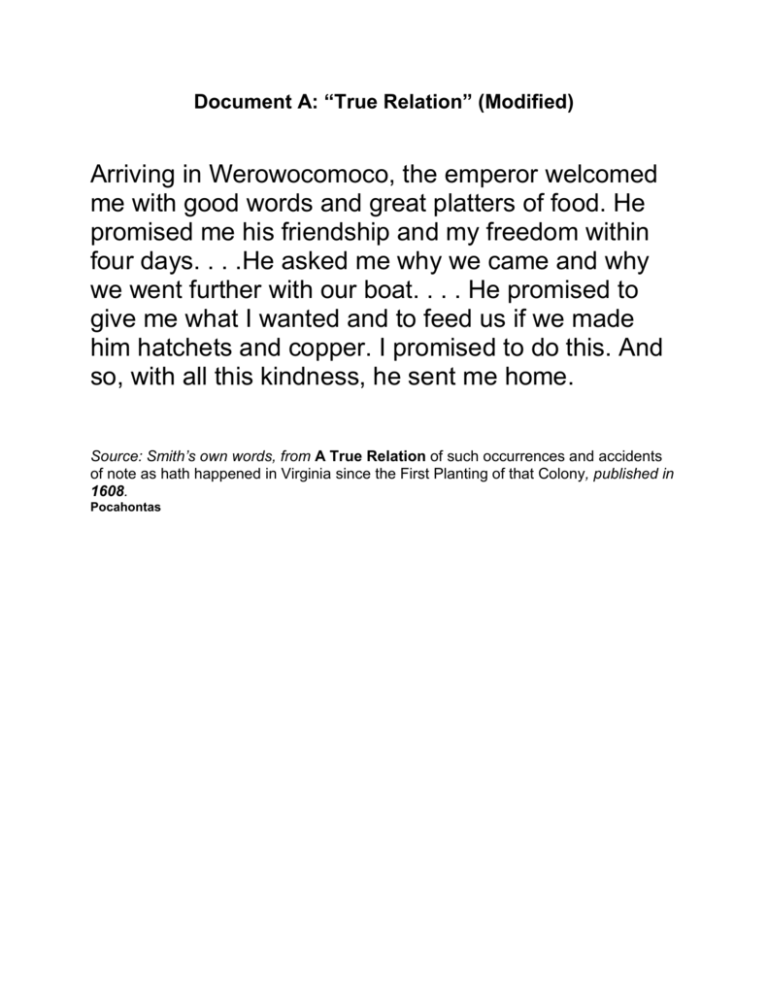
Document A: “True Relation” (Modified) Arriving in Werowocomoco, the emperor welcomed me with good words and great platters of food. He promised me his friendship and my freedom within four days. . . .He asked me why we came and why we went further with our boat. . . . He promised to give me what I wanted and to feed us if we made him hatchets and copper. I promised to do this. And so, with all this kindness, he sent me home. Source: Smith’s own words, from A True Relation of such occurrences and accidents of note as hath happened in Virginia since the First Planting of that Colony, published in 1608. Pocahontas Document B: “General History” (Modified) They brought me to Meronocomoco, where I saw Powhatan, their Emperor. Two great stones were brought before Powhatan. Then I was dragged by many hands, and they laid my head on the stones, ready to beat out my brains. Pocahontas, the King’s dearest daughter took my head in her arms and laid down her own upon it to save me from death. Then the Emperor said I should live. Two days later, Powhatan met me and said we were friends. He told me to bring him two guns and a grindstone and he would consider me his son. Source: From Smith’s later version of the story in General History of Virginia, New England and the Summer Isles, published in 1624. Paul Lewis Historian, Interpretation A (Modified) Author, The Great Rogue: A Biography of Captain John Smith (1966) In 1617, Pocahontas became a big media event in London. She was a “princess” (daughter of “king” Powhatan), and the first Indian woman to visit England. Because she converted to Christianity, people high in the church, as well as the King and Queen, paid attention to her. While all this was going on, John Smith published a new version of True Relation, adding footnotes that say that Pocahontas threw herself on Smith to save him. Smith even takes credit for introducing Pocahontas to the English language and the Bible. Then, in 1624, Smith expands his story in General History. He adds details to the story, and says that Pocahontas risked her life to save his. Why would a chief who had been so friendly before, suddenly decide to kill John Smith? Source: Excerpt from The Great Rogue: A Biography of Captain John Smith, written by the historian Paul Lewis in 1966. Pocahontas J.A. Leo Lemay Historian, Interpretation B (Modified) Author, The American Dream of Captain John Smith (1991) John Smith had no reason to lie. In all of his other writings he is very accurate and observant. For 250 years after his captivity, no one questioned his story. The reason the two versions differ is that their purpose is different. In A True Relation, Smith didn’t want to brag about his adventures, he wanted to inform readers about the land and people of Virginia. In the General History, his goal was to promote settlement in Virginia (and added stories might get people interested). There is no doubt the event happened. Smith may have misunderstood what the whole thing meant. I think it was probably a common ritual for the tribe, where a young woman in the tribe pretends to save a newcomer as a way of welcoming him into the tribe. Source: Excerpt from The American Dream of Captain John Smith, written in 1991 by historian J.A. Leo Lemay.

